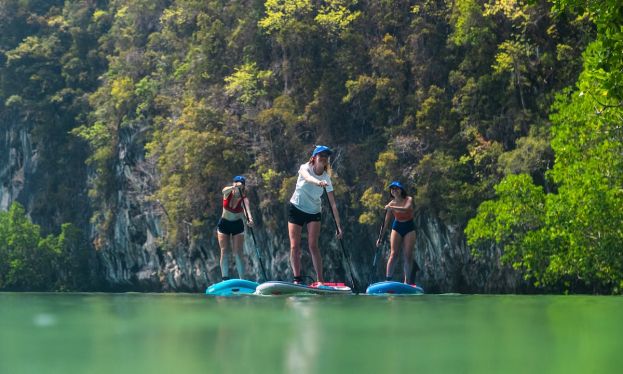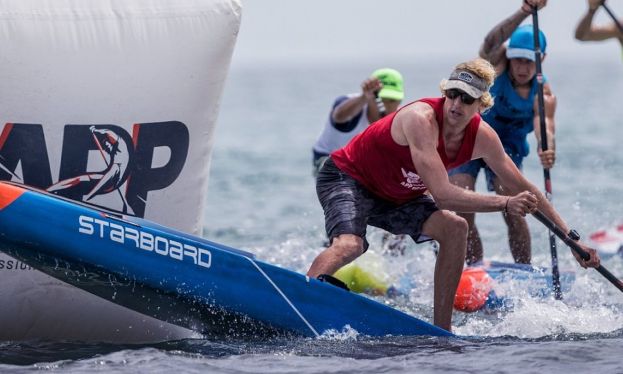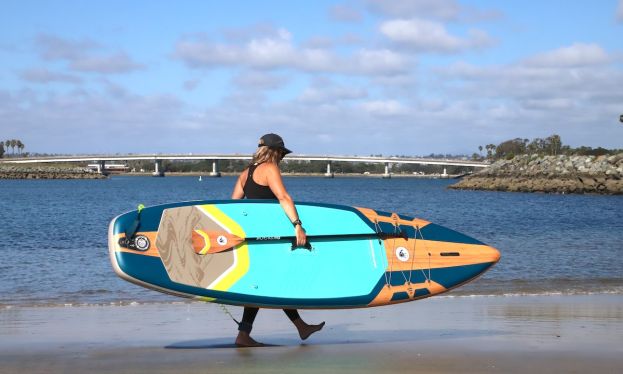5 Ways To Improve Your Paddle Technique
- Written by Staff
- Published in Tips
- Comments::DISQUS_COMMENTS
2012 Columbia Gorge Paddle Challenge| Image: Jennifer Gulizia
SAN DIEGO, California - Once you've got the basics of paddling down, the next big step is fine-tuning and optimizing your technique. This doesn't only apply to people interested in racing - it's equally important for all your daily sessions. Your form makes the world of difference to how much distance you cover per stroke, building muscles/strength without causing damage and developing stamina. This all feeds into making paddling a healthy activity that keeps giving back to your physical and mental condition, rather than causing problems. To speed you all along, we've broken down 5 tips for improving your paddle technique.
#5 Get The right Size Paddle
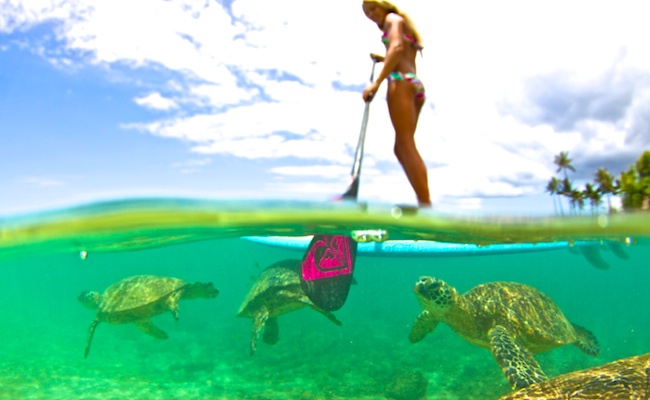
Image: Vavina Walsh
Ideally, you want a paddle that is between 6-12 inches taller than you, depending on what feels right for you. This isn't an exact science and there's no set formula, but the logic behind this is to ensure you can get your blade (the flat head at the end of the paddle) into the water without having to double over or strain your back. It's the blade that does all the work - you don't need the shaft in there, too. If your paddle is too tall, you'll end up having to stretch out too far to raise the blade and digging too deep for your stroke to be effective. This might seem obvious to people who've had some experience with kayaking or canoeing before, but if you've been struggling with the wrong paddle for too long, don't feel bad - you're not the first and won't be the last.
If you'd like to know how to reduce your paddle's length, check out the helpful instruction video on how to cut a paddle to the right size.
#4 Gently Reach For The Horizon
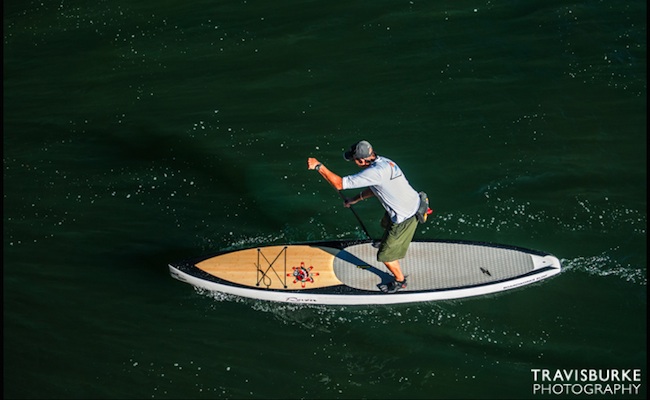
Kelly Wilson, Bend, Oregon | Image submitted by Nolad Wilson
Without hurling yourself over the nose of your board, try to get your paddle as much reach as possible. This doesn't apply to all strokes - sometimes a shorter stroke is exactly what you need - but the idea is to give your blade more water to push through, generating more propulsion. At the same time, don't splash the water or stab it violently - like diving, you want to pierce the surface with as little turbulance as possible. Clean, easy, well-timed strokes are a lot better for leisurely paddling than short pannicked ones - unless you're starting a race and want to generate momentum quickly, but that's a whole different story.
#3 Pull Straight

Image: Sam Voigt
When you're pulling through your stroke, make sure the shaft of your paddle is as close to vertical and straight in the water as possible. If you are coming in from a left angle or sweeping the water like a broom stroke, you won't get forward momentum - you'll be moving at an angle. This becomes more of an issue when you start switching sides - the straighter you stay, the less side sweeping you'll need to do to stay on track.
#2 Paddle With Your Body
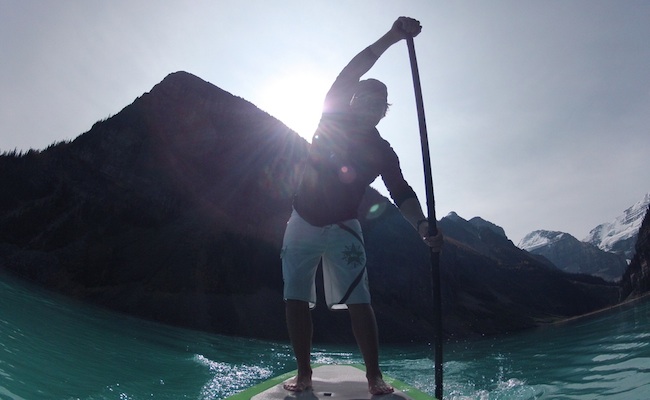
Rob Hobbs putting his back into it
Have you ever shoveled snow or gravel and woken up the next day feeling like you'd gone twelve rounds in the ring with Mike Tyson? In a lot of ways, paddling mimics that same action. It seems like your arms are doing most of the work, but it's actually a collaborative effort between your legs, your core and your upper-body. After your first day of paddling, everybody notices all the extra muscles that ache. That's because you're working a lot more than just your arms to keep moving - you'll do this without consciously trying to. Don't stand still and put your arms through a session of digging in the water, like shoveling. Bend your legs and use your whole torso to follow through, creating rythym with your body.
#1 Practice + Patience = Perfect
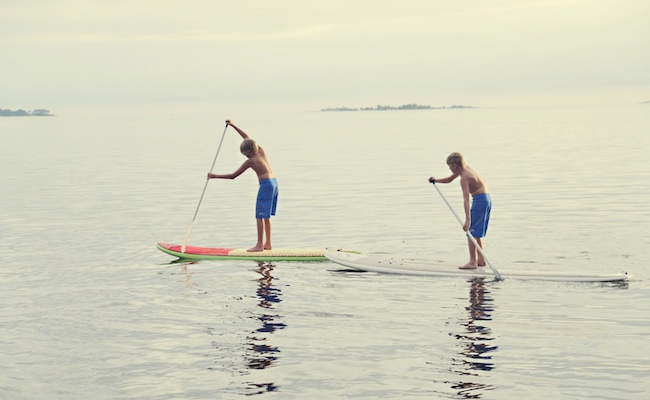
It takes time to develop good rythym, technique and stamina - don't get frustrated if you're not glowing after a two mile paddle. Just relax, go at your own pace and enjoy being outside. With practice and patience comes results. Think of it as a calm stroll, rather than a frustrating jog in the meantime.
Groms practicing | Image: Niclas Cederlund
For something a bit more advanced check out this article on moving on from flat water to beyond.
© Copyrighted & Exclusive SupConnect.com Content.

Staff
Submit your news, events, and all SUP info, so we can keep promoting and driving the great lifestyle of stand up paddling, building its community, and introducing people to healthier living.
Website: supconnect.com Email This email address is being protected from spambots. You need JavaScript enabled to view it.

